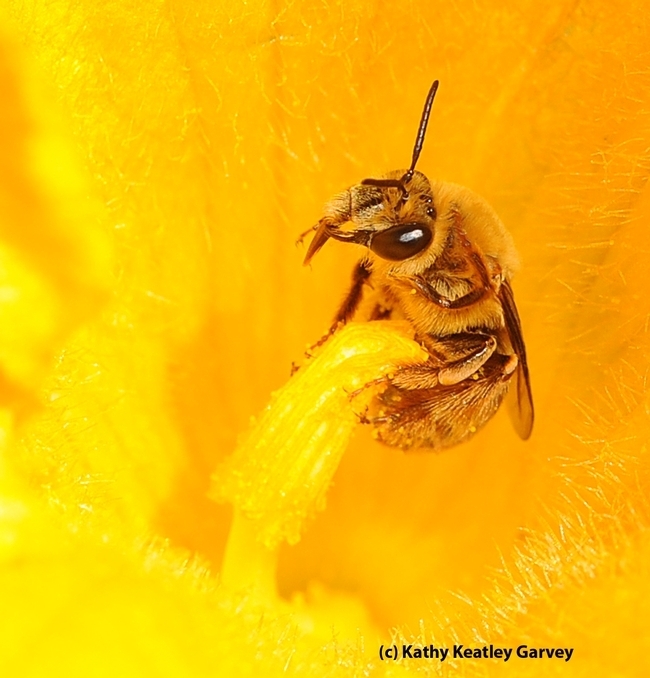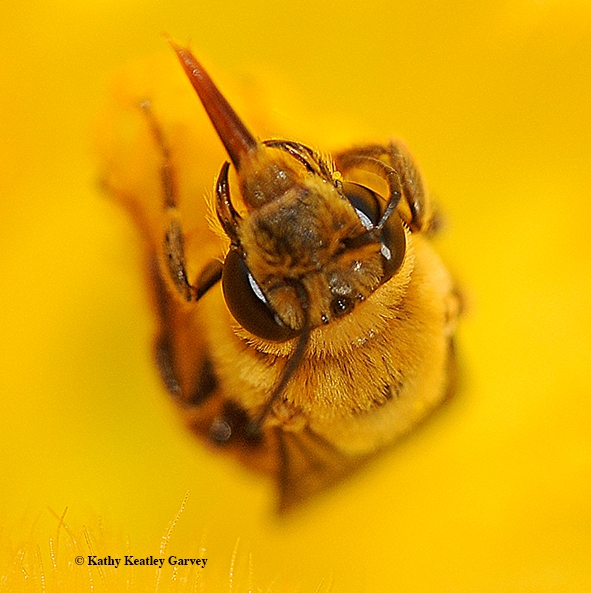- Author: Kathy Keatley Garvey
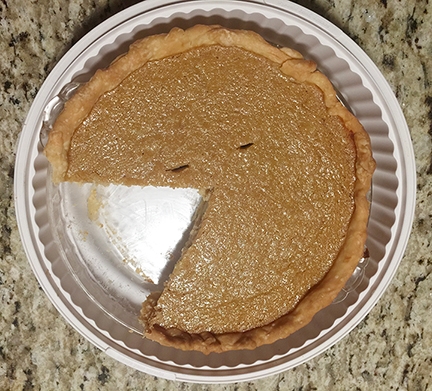
If you've ever been asked that, you may have responded--quite politely--"Small, thank you!"
You probably didn't thank the squash bees.
But as we celebrate Thanksgiving with family and friends, let's remember that squash bees probably pollinated the pumpkin that ended up as a pie on your table.
The squash bee, Peponapis pruinosa, is a specialist that pollinates only the cucurbits or squash family, Cucurbitaceae, which includes pumpkins, squash, gourds, cucumbers and zucchini. P. pruinosa is a species of solitary bee in the tribe Eucerini, the long-horned bees. There's also another genera, Xenoglossa.
Squash bees are early risers, rising before the sun does. They begin pollinating the blossoms as soon as they open. Other bee species, such as honey bees (which are non-natives), don't visit the flowers so early.
Around noon, the blossoms close for the day, so there's a limited time for pollination--and a limited time to admire and photograph them.
The females are ground nesters. "The males sleep in the blossoms at night and wait for the females to arrive," the late late Robbin Thorp (1933-2019), UC Davis distinguished emeritus professor of entomology, told us.
Another attribute: The squash bee is a native of North America, unlike the honey bee.
"Before Europeans brought honey bees to the New World, squash bees were busy aiding the adoption, domestication, spread, and production of squashes and gourds by indigenous peoples throughout the Americas," according to an article by USDA research entomologist James Cane.
"Hey, there, pumpkin, do you want another piece of pie, pollinated by our native bees, the squash bees?"
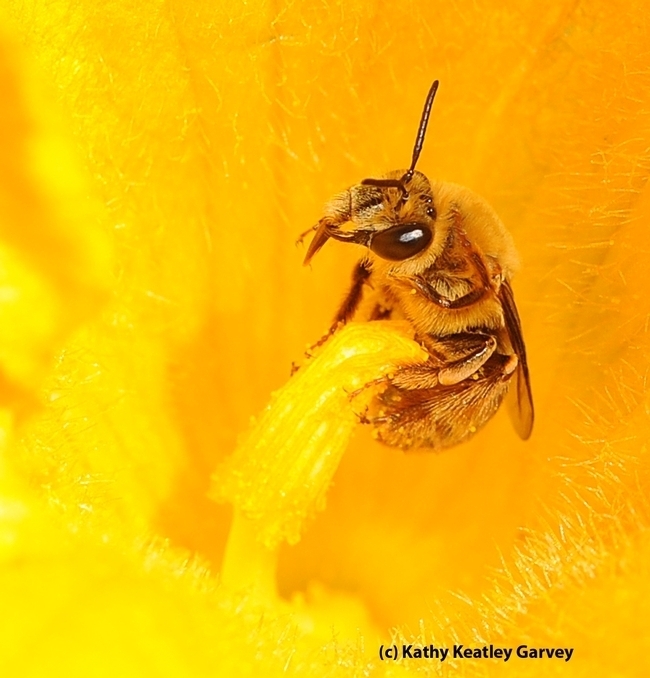
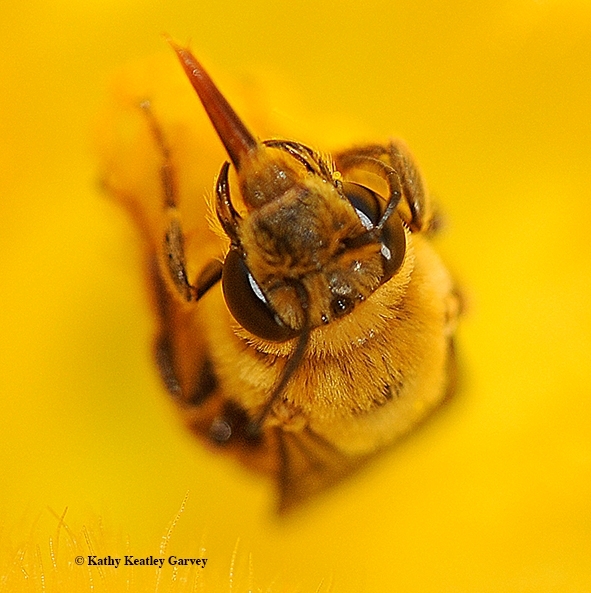
- Author: Kathy Keatley Garvey
If you're having pumpkin pie or butternut squash this Thanksgiving, thank the squash bee.
Squash bees are specialists (not generalists) that pollinate only the cucurbits or squash family, Cucurbitaceae, which includes pumpkins, squash, gourds, cucumbers and zucchini.
Last summer we saw dozens of Peponapis pruinosa pollinating our squash and cucumbers. Peponapis pruinosa is a species of solitary bee in the tribe Eucerini, the long-horned bees.
"Isn't that a honey bee?" a friend asked.
"No, it's a squash bee; it's smaller than the honey bee."
"Never heard of it."
Other factoids, as shared with us by the late Robbin Thorp, distinguished emeritus professor of entomology at UC Davis:.
- Both the males and females are golden brown with a fuzzy yellow thorax. The males have a yellow spot on their face.
- Males sleep in the blossoms at night. There they wait for the females to arrive.
- Squash bees are early risers (they rise before the sun does). They begin pollinating the blossoms as soon as they open in the morning. Other bee species, such as honey bees, don't visit the flowers so early. The squash blossoms close after several hours so there's a limited amount of pollination time.
If you're aiming to photograph them, get there early. If you don't, you will find the blossoms closing.
